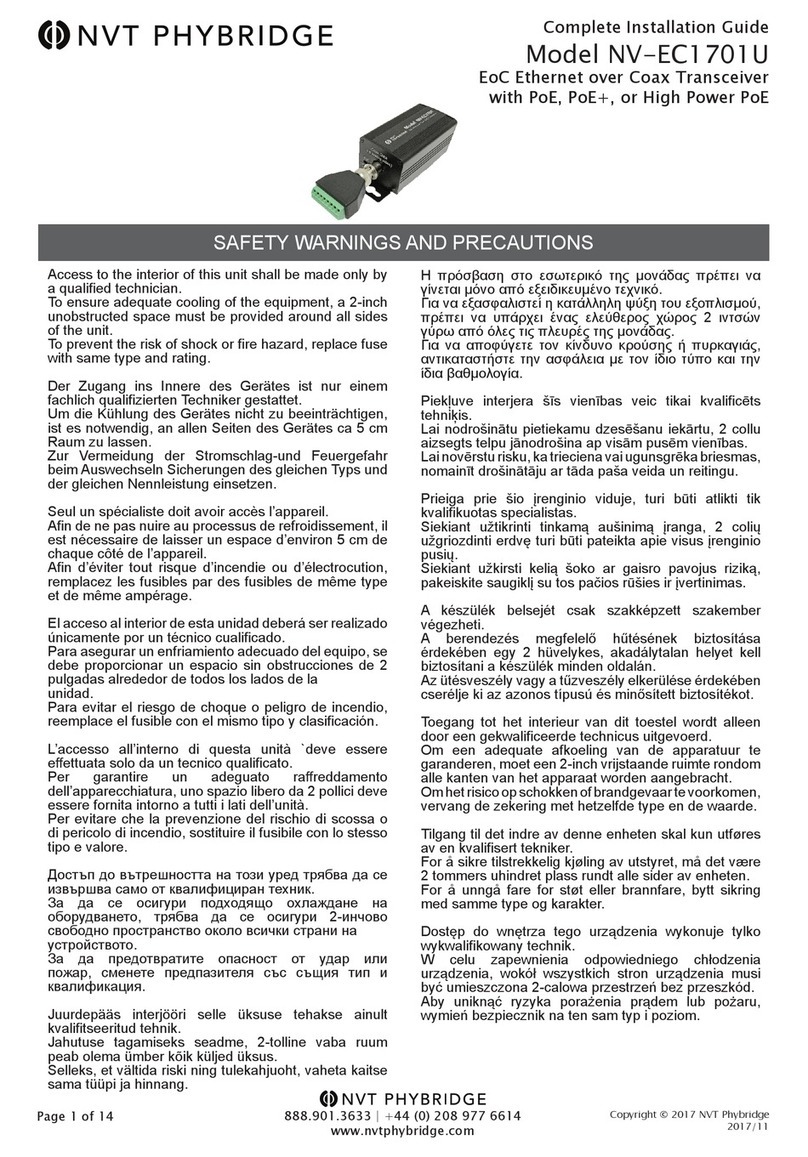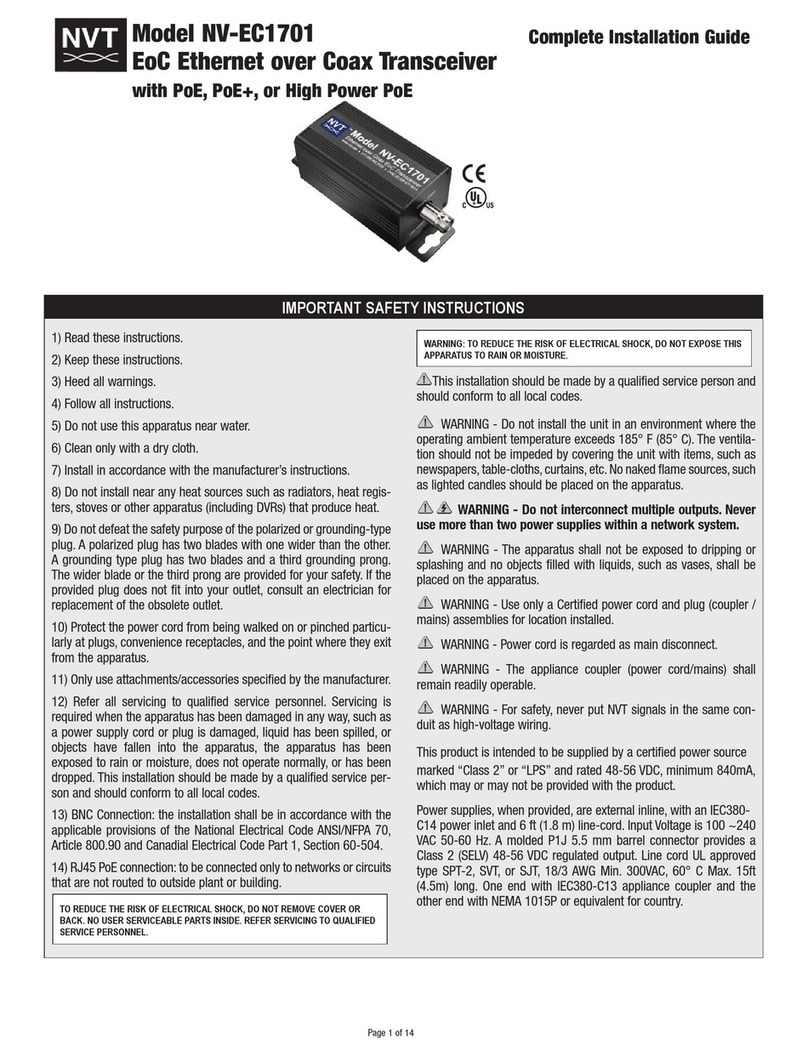
Model NV-EC1701U Eo2TM
Ethernet over 2- ire Transceiver
with PoE+ or High Power PoE
1) Read these instructions.
2) Keep these instructions.
3) Heed all warnings.
4) ollow all instructions.
5) Do not use this apparatus near water.
6) Clean only with a dry cloth.
7) Install in accordance with the manufacturer’s instructions.
8) Do not install near any heat sources such as radiators, heat regis-
ters, stoves or other apparatus (including DVRs) that produce heat.
9) Do not defeat the safety purpose of the polarized or grounding-type
plug. A polarized plug has two blades with one wider than the other.
A grounding type plug has two blades and a third grounding prong.
The wider blade or the third prong are provided for your safety. If the
provided plug does not fit into your outlet, consult an electrician for
replacement of the obsolete outlet.
10) Protect the power cord from being walked on or pinched
particularly at plugs, convenience receptacles, and the point
where they exit from the apparatus.
11) Only use attachments/accessories specified by the manufacturer.
12) Refer all servicing to qualified service personnel. Servicing is
required when the apparatus has been damaged in any way, such as
a power supply cord or plug is damaged, liquid has been spilled, or
objects have fallen into the apparatus, the apparatus has been
exposed to rain or moisture, does not operate normally, or has been
dropped. This installation should be made by a qualified service per-
son and should conform to all local codes.
13) BNC Connection: the installation shall be in accordance with the
applicable provisions of the National Electrical Code ANSI/N PA 70,
Article 800.90 and Canadial Electrical Code Part 1, Section 60-504.
14) RJ45 PoE connection: to be connected only to networks or circuits
that are not routed to outside plant or building.
This installation should be made by a qualified service person and
should conform to all local codes.
WARNING - Do not install the unit in an environment where the
operating ambient temperature exceeds 185° (85° C). The ventila-
tion should not be impeded by covering the unit with items, such as
newspapers, table-cloths, curtains, etc. No naked flame sources, such
as lighted candles should be placed on the apparatus.
WARNING - Do not interconnect multiple outputs. Never use
more than two power supplies within a network system.
WARNING - The apparatus shall not be exposed to dripping or
splashing and no objects filled with liquids, such as vases, shall be
placed on the apparatus.
WARNING - Use only a Certified power cord and plug (coupler /
mains) assemblies for location installed.
WARNING - Power cord is regarded as main disconnect.
WARNING - The appliance coupler (power cord/mains) shall
remain readily operable.
WARNING - or safety, never put NVT signals in the same con-
duit as high-voltage wiring.
This product is intended to be supplied by a certified power source
marked “Class 2” or “LPS” and rated 48-56 VDC, minimum 840mA,
which may or may not be provided with the product.
Power supplies, when provided, are external inline, with an IEC380-
C14 power inlet and 6 ft (1.8 m) line-cord. Input Voltage is 100 ~240
VAC 50-60 Hz. A molded P1J 5.5 mm barrel connector provides a
Class 2 (SELV) 48-56 VDC regulated output. Line cord UL approved
type SPT-2, SVT, or SJT, 18/3 AWG Min. 300VAC, 60° C Max. 15ft
(4.5m) long. One end with IEC380-C13 appliance coupler and the
other end with NEMA 1015P or equivalent for country.
TO REDUCE THE RISK OF ELECTRICAL SHOCK, DO NOT REMOVE COVER OR
BACK. NO USER SERVICEABLE PARTS INSIDE. REFER SERVICING TO QUALIFIED
SERVICE PERSONNEL.
WARNING: TO REDUCE THE RISK OF ELECTRICAL SHOCK, DO NOT EXPOSE THIS
APPARATUS TO RAIN OR MOISTURE.
IMPORTANT SAFETY INSTRUCTIONS
Page 1 of 12
Complete Installation Guide





























